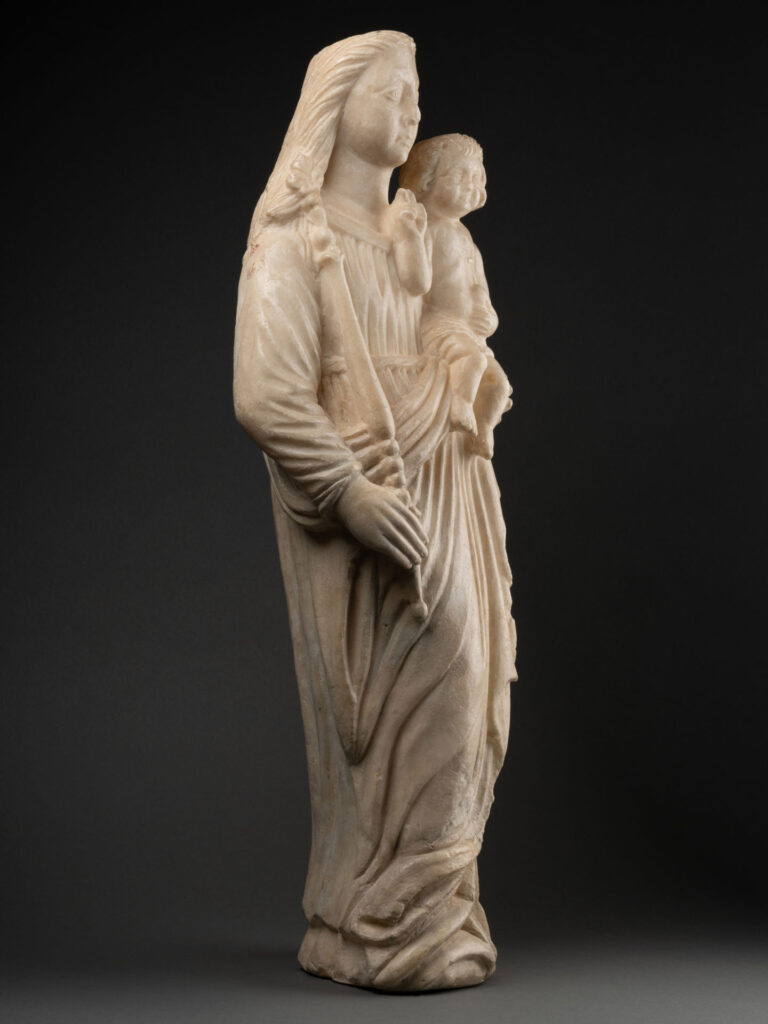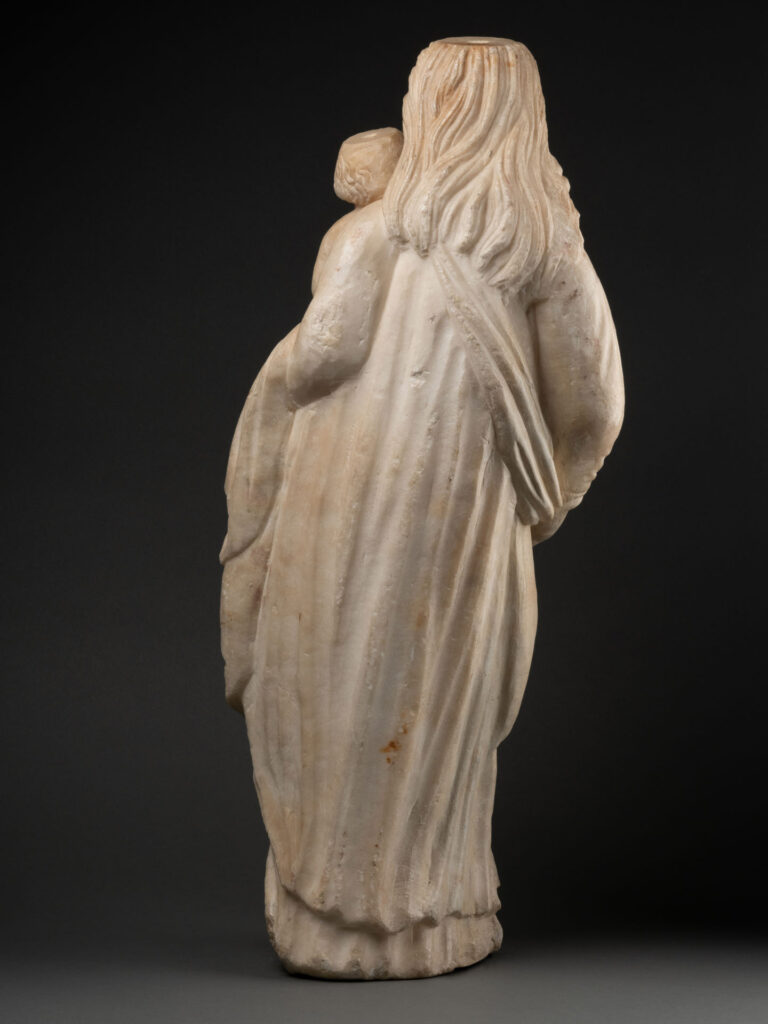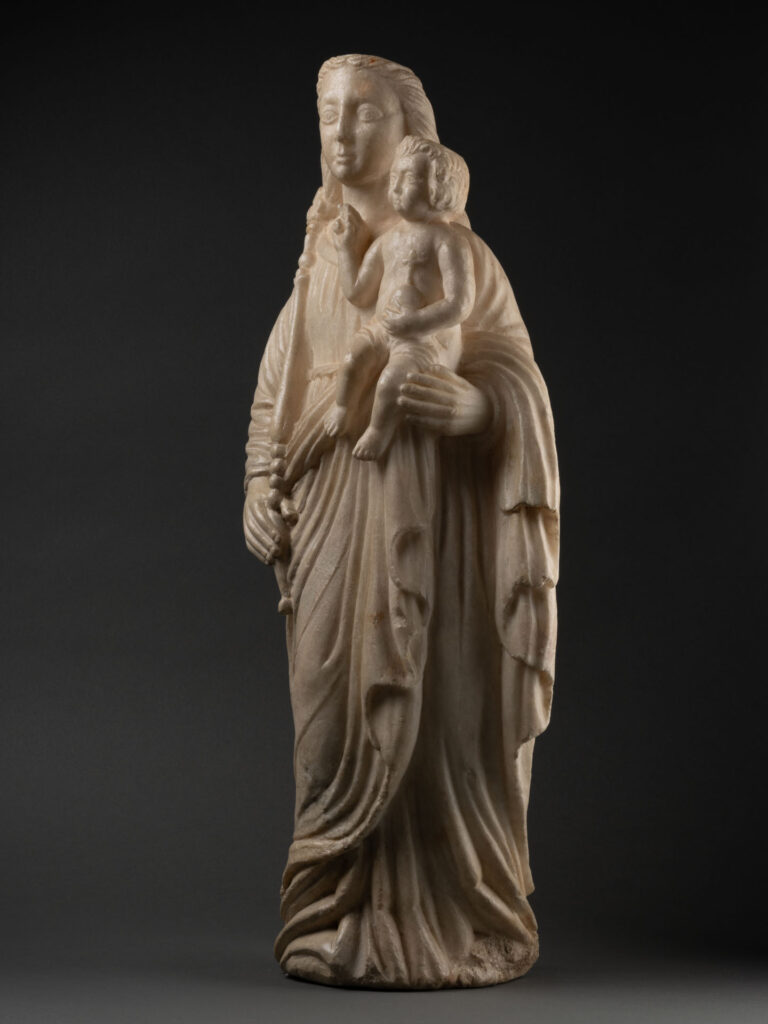This 16th-century marble sculpture depicts a Virgin and Child from southern Italy.
The Virgin presents a calm, gentle face, her wide eyes seeming to scrutinize the viewer. Her long hair falls delicately down her back. She’s wearing a belted dress, the folds of which are elegantly held over her arm. The falls of the garment form pretty antique-style folds, covering her feet. The Virgin holds the Infant Jesus in her left hand, and a scepter topped with a fleur-de-lys in her right.
Christ is shown as a chubby, curly-haired child, looking slightly to the right. His right hand is raised in a sign of blessing (i.e. thumb, index and middle fingers are raised). In his left hand, he holds an orb surmounted by a cross.
These two figures have flat tops, with a hole in the center, showing evidence of removable crowns.
It is clear that this sculpture incorporates many symbols associated with power and royalty, such as the crown, the scepter, the cruciferous orb and the gesture made by the Child, which can be seen on the Bâtons de Justice.
The scepter in the Virgin Mary’s hand is a secular symbol of royal power. In Frankish times, the fleur-de-lys at the end of the sceptre was a symbol of fertility. Since it is held by the Virgin, the scepter has a double symbolism: royalty and the Virgin’s virginal maternity.
The king often carried a hand of justice in addition to his orb and scepter. This stick with a hand at the end is exactly what the baby Jesus is doing. Thus, it supports the fact that the king dispenses justice according to what is dictated to him by the higher power.
The child is seated against his mother’s arm, all flesh, with only a piece of cloth covering his lower body. His face looks peaceful, with cheeks that stand out and support his childlike side.
The cruciferous orb he holds in his left hand is a symbol of authority used since the Middle Ages in Western religious iconography. For Christians, the globe represents Christ’s temporal and spiritual dominion over the world. From the 15th century onwards, this topos came to be known as “Salvator Mundi”, the savior of the world.
However, for kings, the globe will symbolize the earth and thus show the ruler’s world domination, while the cross will be there to confirm his Christian faith, as well as the fact that his power comes from God. As can be seen in the coins minted in the Byzantine Empire. The orb is therefore an integral part of the symbols of imperial and royal power, just like the scepter and the hand of justice.
We find ourselves in the presence of a work that places great emphasis on the royal nature of Christ. Shown as a true sovereign, the Child, still carried by his mother, will reign over his followers as Christ the King.



